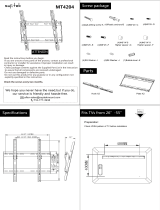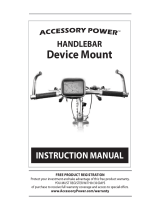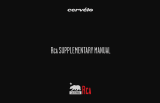
9
TO ENSURE SAFETY
Lithium ion battery
•
Do not place the battery into fresh water or sea water, and do not allow the battery terminals to get wet. If this is not observed, fire, bursting or
overheating may occur.
•
Do not use the battery if it has any noticeable scratches or other external damage. If this is not observed, bursting, overheating or problems with
operation may occur.
•
Do not throw or subject the battery to strong shock. If this is not observed, bursting, overheating or problems with operation may occur.
•
Do not use the battery if leakages, discoloration, deformation or any other abnormalities occur. If this is not observed, bursting, overheating or
problems with operation may occur.
•
If any leaked fluid gets on your skin or clothes, wash it off immediately with clean water. The leaked fluid may damage your skin.
•
Do not use it outside these operating temperature ranges of the battery. If the battery is used or stored in temperatures which are outside these
ranges, fire, injury or problems with operation may occur. The operating temperature ranges for the battery are given below.
1. During discharge: –10°C - 50°C
2. During charging: 0°C - 45°C
SM-BTR1: Lithium ion battery (external type)
•
If charging is not complete after 1.5 hours, stop charging. If this is not observed, fire, bursting or overheating may occur.
SM-BTR2/BT-DN110/BT-DN110-A: Lithium ion battery (built-in type)
•
If the battery does not become fully charged after 4 hours, stop charging. If this is not observed, fire, bursting or overheating may occur.
Battery charger/Battery charger cord
SM-BCR1: Battery charger for SM-BTR1
•
Hold the power plug when connecting or disconnecting the plug. Failure to do so may cause a fire or electric shock.
•
If the following occurs, stop using the device and contact a dealer. A fire or electric shock may occur.
*
If heat or acrid-smelling smoke is coming out from the power plug.
*
There may be a bad connection inside the power plug.
•
Do not overload the electrical outlet with appliances beyond its rated capacity, and use only a 100 - 240 V AC electrical outlet. If the electrical outlet is
overloaded by connecting too many appliances using adapters, overheating resulting in fire may occur.
•
Do not damage the power cord or power plug. (Do not damage, process, let near hot objects, bend, twist or pull them; do not place heavy objects on
top or bundle them tightly.) If they are used while damaged, fire, electric shocks or short-circuits may occur.
•
Do not use the battery charger with commercially-available electrical transformers designed for overseas use (travel converters). They may damage the
battery charger.
•
Always be sure to insert the power plug as far as it will go. If this is not observed, fire may occur.
SM-BCR2: Battery charger for SM-BTR2/BT-DN110/BT-DN110-A
•
Do not use any USB cable other than the USB cable which is supplied with the PC linkage device. This may cause a charging error, fire, or failure to
connect to PC due to overheating.
•
Do not connect the charger to PC when it is on standby. This may cause a PC failure depending on its specifications.
•
When connecting or disconnecting the USB cable or the charger, be sure to hold the cable by the plug. Failure to do so may cause a fire or electric
shock. If the following occurs, stop using the device and contact a dealer. A fire or electric shock may occur.
*
If heat or acrid-smelling smoke is coming out from the power plug.
*
There may be a bad connection inside the power plug.
•
If it thunders while charging with an AC adapter with a USB port, do not touch the device, bicycle, or the AC adapter. If lightning strikes, electric
shocks may occur.
•
Use an AC adapter with a USB port with a voltage of 5.0 V DC and with a current equal to or higher than 1.0 A DC. If the one with a current lower
than 1.0 A DC is used, a charge error may occur or the AC adapter may heat up, leading to a fire.
•
Do not use a USB hub when connecting the cable to a computer USB port. This may cause a charging error or fire due to overheating.
•
Be careful not to damage the charging cable. (Do not damage, process, let near hot objects, bend, twist or pull them; do not place heavy objects on
top or bundle them tightly.) If they are used while damaged, fire, electric shocks or short-circuits may occur.























